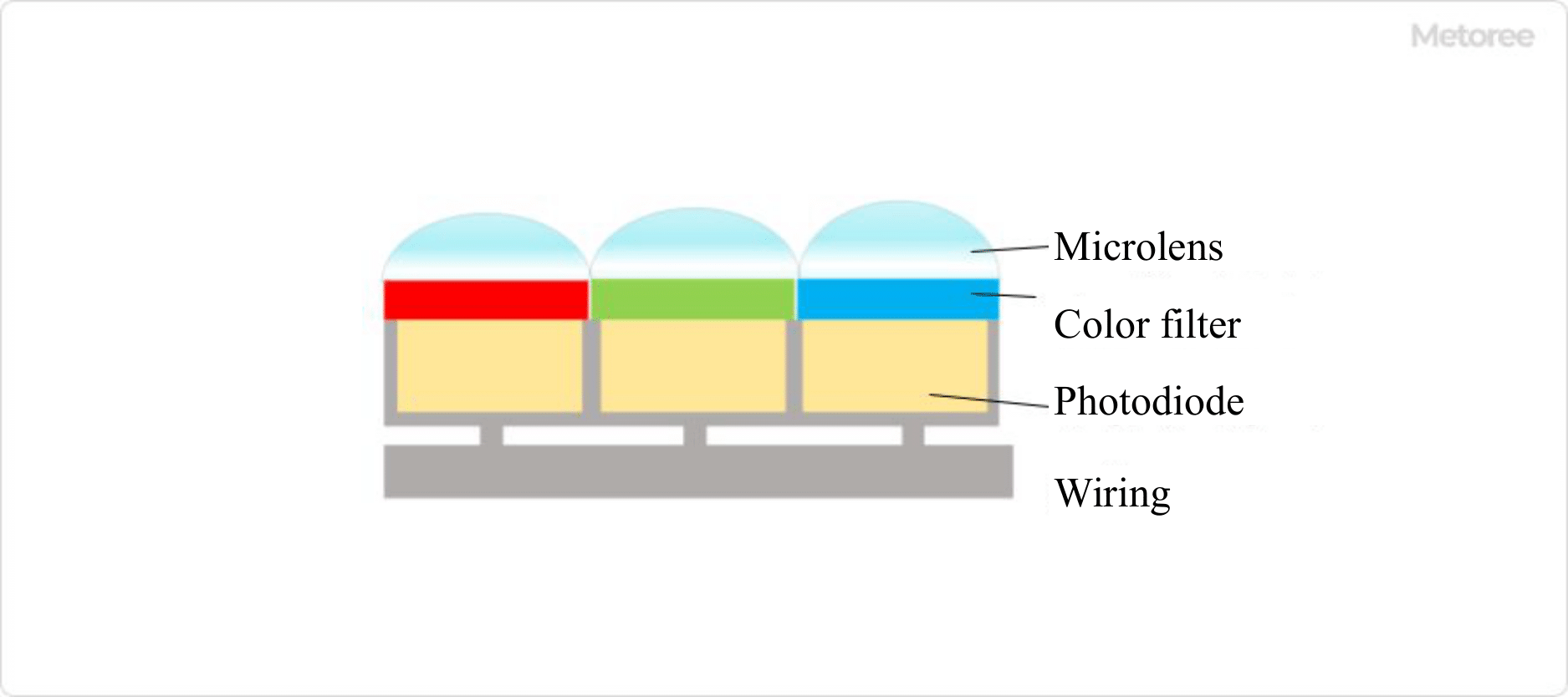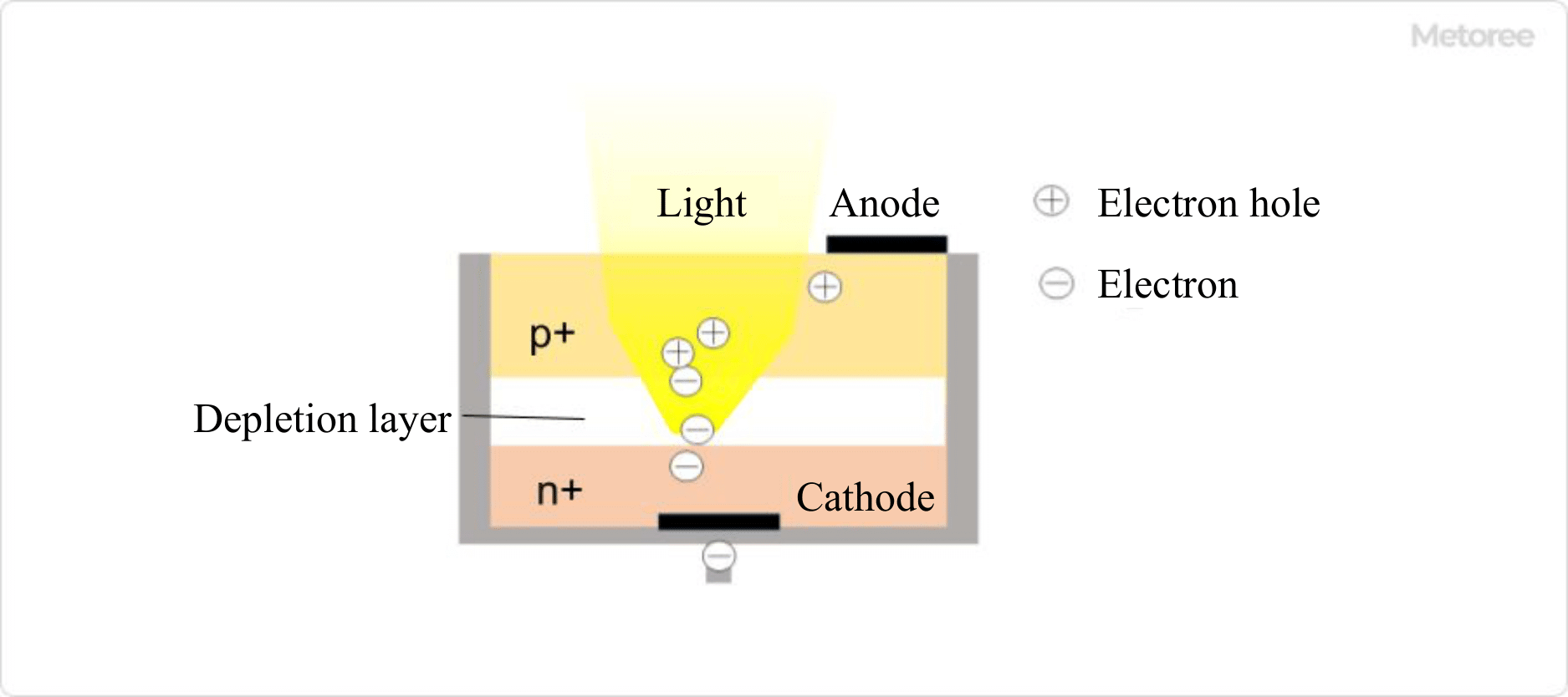What Is a CCD Detector?

Figure 1. Top view of CCD sensor
A CCD detector (Charge-Coupled Device sensor) is a semiconductor device that converts light intensity into electrical charge as a charge-coupled device.
CCD detectors are a type of image sensor (sometimes called CCDs) and were the dominant type until 2004 when they were surpassed by CMOS sensors in terms of the number of shipments.
They consist of a large number of elements called pixels arranged in a grid pattern as shown in Figure 1. The number of pixels in a camera refers to the number of these elements, using the unit of pixels. In practice, the number is usually in the millions of pixels.
Pixels transmitting the three primary colors of light, red, green, and blue (RGB) or their complementary colors cyan, magenta, yellow, and green (CMYG), are arranged in a mosaic-like pattern, and each pixel is transmitted in turn vertically and horizontally, and the signal is amplified by an amplifier and transmitted as image data. This sequence of operations is often referred to as a bucket relay. In Figure 1, the wiring is shown as if it were next to the pixel, but in reality, the wiring section is located below the pixel. (See Figure 2)
Uses of CCD Detectors
While CMOS sensors are the mainstream in cameras, video cameras, and scanners, CCD detectors are often used in many popular digital cameras, astronomical telescopes, and microscopes because of their superior sensitivity in long exposures.
In recent years, CCD detectors are increasingly being used in the built-in cameras of cell phones. These light detectors are used in many fields, including light intensity measurement, image measurement, DVD pickups, and optical signal detection in optical communications.
Principles of CCD Detectors
When the depletion layer of a photodiode receives light, an electron-hole pair is formed inside. This is called the photoelectric effect. As the intensity of light increases, the amount of charge stored increases. The phenomenon in which a voltage corresponding to the intensity of light is generated by exposure to light is called the photovoltaic effect.
CCD detector is thus responsible for converting the intensity of light into an electrical signal.
Structure of CCD Detector
As shown in Figure 2, a CCD detector consists of a light-collecting lens on the incident side, a filter that transmits light of a specific wavelength, and a photodiode with layers of p-type, n-type, and i-type semiconductors, mainly made of silicon, sandwiched between metal electrodes (cathode and anode) on the top and bottom.
1. Microlens
Microlenses are placed on the top surface of each pixel to focus light. They are also called on-chip microlenses because they are formed on wafers using glass or resin materials in the same way as semiconductor devices.
2. Color Filter

Figure 2. Conceptual diagram of CCD sensor pixel cross-sectional view
Color filters are formed on thin glass substrates with a color resist film that selectively transmits light in a specific wavelength range, allowing red (R, 640~770nm), green (G, 490~550nm) and blue (B, 430~490nm) light to enter the photodiode directly below. The light is then incident on the photodiode directly below it. A thin black partition called a black matrix is formed between the color filters to prevent the colors from mixing with each other. Because they are made on a semiconductor wafer in the same manufacturing process as semiconductors, they are also called on-chip color filters.
3. Photodiode

Figure 3. Conceptual diagram of photodiode structure and operation
A photodiode consists of a p-type semiconductor on the top (light-entering side) and an n-type semiconductor on the bottom, with an anode on the top and a cathode on the bottom.